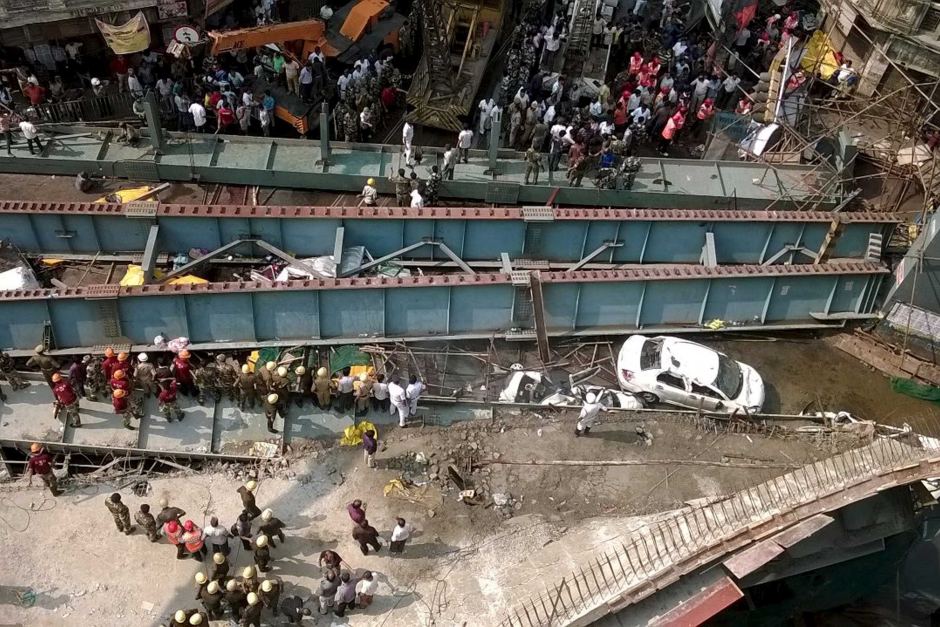A few years back in time, New Delhi got the major landmark- a new one at that. It was in the form of the now-famous Terminal 3, also called T3. A couple of years later, followed the now iconic T2, in Mumbai. Bangalore today has got more IT-centred complexes and an environment for sustaining tech-innovations that not even Delhi or Mumbai can match, even if IT was given focus in these cities today.
Moreover, there’s an interesting interlocking web of metro rail in almost all the major urban centres of the country that have literally shaped a new India’s identity. With the coming up of the famous Delhi-Agra, expressway, India didn’t only give the national capital a huge facelift. It, actually, proved that the development of facets like sporting symposiums called the Formula 1 circuit was only a small indication of what the country could do when it came to shaping the overall infrastructure of the country.

But let’s look beyond the veil of these modern, iconic Infrastructure-backed developments.
There seems to be a massive problem with the bridges one finds in cities such as Kolkata.
There’s also an interesting case in point. All’s not well with the state of development, rather the quality of development of the Indian infrastructure. Or so it seems!
The bridges that one finds in the midst of a sprawling urban city aren’t just an indication of the infrastructural might of the country showing off. They are, in fact, an indication of the willingness of a growing nation to let civilians enjoy a peaceful moment under the sun, where there’s so much duress.

In this part of the 21st century, where India is more than the quintessential hotbed of multiple sub-cultures, a catchy enigma spun around colours, languages, customs and cuisines, India is rising as an economy.
There’s now an increased focus on India’s GDP than there’s ever been in the past. India also happens to be the land of hope and dreams, with the vibrant culture of entrepreneurship taking over the collective imagination of the country further.
In the past three years, as many as 2 bridges have collapsed in Kolkata. And where India stands, then the crashing bridges only seem to be a problem that has arisen, in the form of another adjective; falling bridges.
In a poetic sense, we got to learn, “The London Bridge is falling down.” Now, face the heat and the music in India. Here, constantly, bridges are falling down.
Why aren’t the culprits- the intricate web of builders and government-controlled estates involved in passing tenders and allowing construction being tasked?
Why aren’t they behind the bars for a lifetime punishment? Only the government can answer and one does expect a few answers, sooner than any delay.
But that said, in 2008, and it cannot be easily forgotten that Delhi witnessed a similar furore that Kolkata is currently livid about and rightly so, so to speak.
At least, 17 were injured when a mainstream metro-rail bridge had collapsed in the eastern periphery of the national capital in the Vikas Marg region. Implicit in this fiasco was also the damage wrecked to busses and passing vehicles.
This was not an ordinary brigde. The shocking part of this 400-tonne concrete span of the bridge was that it fell whilst the complete bridge hadn’t yet reached the end-point of construction. Wasn’t that shocking enough?
A few months later, precisely on July 6 in 2009, 6 died and as many as 13 were injured when a leading Metro Bridge collapsed very close to a leading DU college, Lady Sriram, Lajpat Nagar.
The Majerhat bridge in Kolkata has only served a critical current warning of just what is wrong. Probably, those who want to understand the key takeaway in understanding just what is going wrong may already have made their observations. There seems to be either an absolute botched-up enquiry into the way the bridges are being made or constructed or those who should be held accountable aren’t actually being taken to task.
While the past episodes have only been sombre, in the form of a footover bridge collapsing at Allahabad railway station and also the Varanasi bridge collapse that led to 18 lives lost, one can say with safety that the country doesn’t seem to be keen to join the connecting dots.
Why bridges and over and above, why with that frequency? Can someone, somewhere answer the menace?


